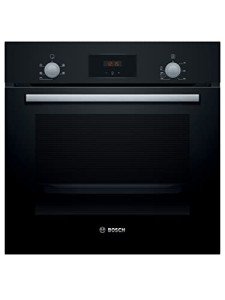Guide To Builtin Ovens: The Intermediate Guide In Builtin Ovens
페이지 정보
작성자 Shayne 댓글 0건 조회 2회 작성일 25-05-11 11:56본문
The Rise of Built-in Ovens: Enhancing Modern Kitchens
In the ever-evolving world of home enhancement, built-in ovens have emerged as a staple in modern kitchen design. These appliances not only provide a sleek and smooth visual however likewise contribute considerably to the performance and efficiency of home cooking. This post explores the different elements of built in ovens and microwaves-in ovens, including their advantages, types, setup considerations, and maintenance, together with frequently asked concerns to provide a detailed overview.
What is a Built-in Oven?
A built-in oven is a device designed to be set up into kitchen cabinetry, providing it a structured look and releasing up counter space. Unlike conventional freestanding ovens, which stand alone and are typically bulky, built-in ovens fit flush with cabinets for a more integrated look. They are readily available in different sizes, styles, and functions, dealing with a vast array of cooking requirements and kitchen styles.
Benefits of Built-in Ovens
Built-in ovens included various benefits that make them appealing to property owners. Below are a few of the crucial benefits:
- Space Efficiency: Built-in ovens conserve counter area while optimizing kitchen designs.
- Personalized Design: They can be integrated into cabinets, enabling property owners to personalize visual appeals according to personal taste.
- Enhanced Performance: Many built-in ovens come equipped with sophisticated cooking technologies, enabling better heat circulation and faster cooking times.
- Accessibility: Their installation at eye level makes it simpler to inspect food without bending down, supplying higher convenience and safety.
- Resale Value: A modern, properly designed kitchen can boost residential or commercial property worth, making built-in ovens built in a financial investment worth thinking about.
Kinds Of Built-in Ovens
Built-in ovens can be categorized based upon their design and function. The following list describes the typical types of built-in ovens readily available on the marketplace:
- Single Ovens: A basic model that includes one cooking compartment.
- Double Ovens: These included 2 separate compartments, which enable cooking multiple meals at different temperature levels.
- Wall Ovens: Installed into the wall for a space-saving service, these ovens offer convenience and ease of access and can be either single or double.
- Steam Ovens: These utilize steam for wet cooking and are often favored for much healthier meal preparation.
- Convection Ovens: Designed with a fan that circulates hot air, guaranteeing even cooking and browning.
| Type | Description | Suitable For |
|---|---|---|
| Single Oven | One cooking compartment for basic baking and roasting. | Small households and cooking areas. |
| Double Oven | Two compartments for synchronised cooking of different meals. | Large households with varied menus. |
| Wall Oven | Built into the wall for easy gain access to. | Space-conscious kitchens. |
| Steam Oven | Cooks using steam for healthier choices. | Health-conscious people. |
| Convection Oven | Circulates hot air for even cooking and quicker outcomes. | Baking lovers and chefs. |
Setup Considerations
Picking to install a built-in Builtin Oven involves numerous considerations to make sure that it fits flawlessly within the kitchen. Important aspects consist of:

- Cabinet Dimensions: Accurate measurement of the cabinet space needed for the oven is vital for a proper fit.
- Power Supply: Built-in ovens generally require a dedicated power supply; seeking advice from a certified electrical contractor may be essential.
- Ventilation: Ensure that the fitted oven's ventilation requirements are satisfied to promote safe operation.
- Local Building Codes: Compliance with regional codes is important when installing any kitchen appliance.
It's strongly advised that installation be carried out by professionals to guarantee security and adherence to manufacturer specifications.
Maintenance of Built-in Ovens
Keeping built-in ovens is necessary to guarantee their durability and operation. Below are some tips for builtin oven reliable upkeep:
- Regular Cleaning: Wipe down surfaces after each use to prevent build in oven-up; consider self-cleaning choices if readily available.
- Examine Seals: Inspect the oven door seals frequently for wear and tear to keep efficiency and prevent heat loss.
- Calibrate Temperature: Occasionally check and adjust oven temperature settings if cooking results are irregular.
- Professional Servicing: Schedule routine upkeep with certified professionals for electrical elements and much deeper cleansing.
Frequently Asked Questions (FAQs)
Q1: How do I pick the best size built-in oven for my kitchen?
A1: Measure the offered cabinet area and consider the cooking practices of your family. Single or double ovens prevail options based upon meal preparation requirements.
Q2: Are built-in ovens more energy-efficient than freestanding ones?
A2: buy built in oven-in ovens can be more energy-efficient due to much better insulation and advanced cooking technology; however, actual performance depends on the specific model and usage.
Q3: Can built-in ovens be set up throughout the kitchen?
A3: Built-in ovens require specific kitchen cabinetry and might require a dedicated power source, so planning their placement thoroughly within the kitchen design is vital.
Q4: What type of upkeep do built-in ovens need?
A4: Regular cleaning, inspecting door seals, calibrating temperatures, and professional maintenance as needed are all parts of proper upkeep.
Built-in ovens are an amazing addition to contemporary cooking areas, providing both aesthetic and practical advantages. Their space-saving design, Builtin oven customizable choices, and advanced features deal with diverse cooking needs. When considering a built-in oven, house owners should consider their specific cooking choices, kitchen layout, and maintenance abilities. By doing so, they would be making an important financial investment in their home, increasing both functionality and design.
댓글목록
등록된 댓글이 없습니다.